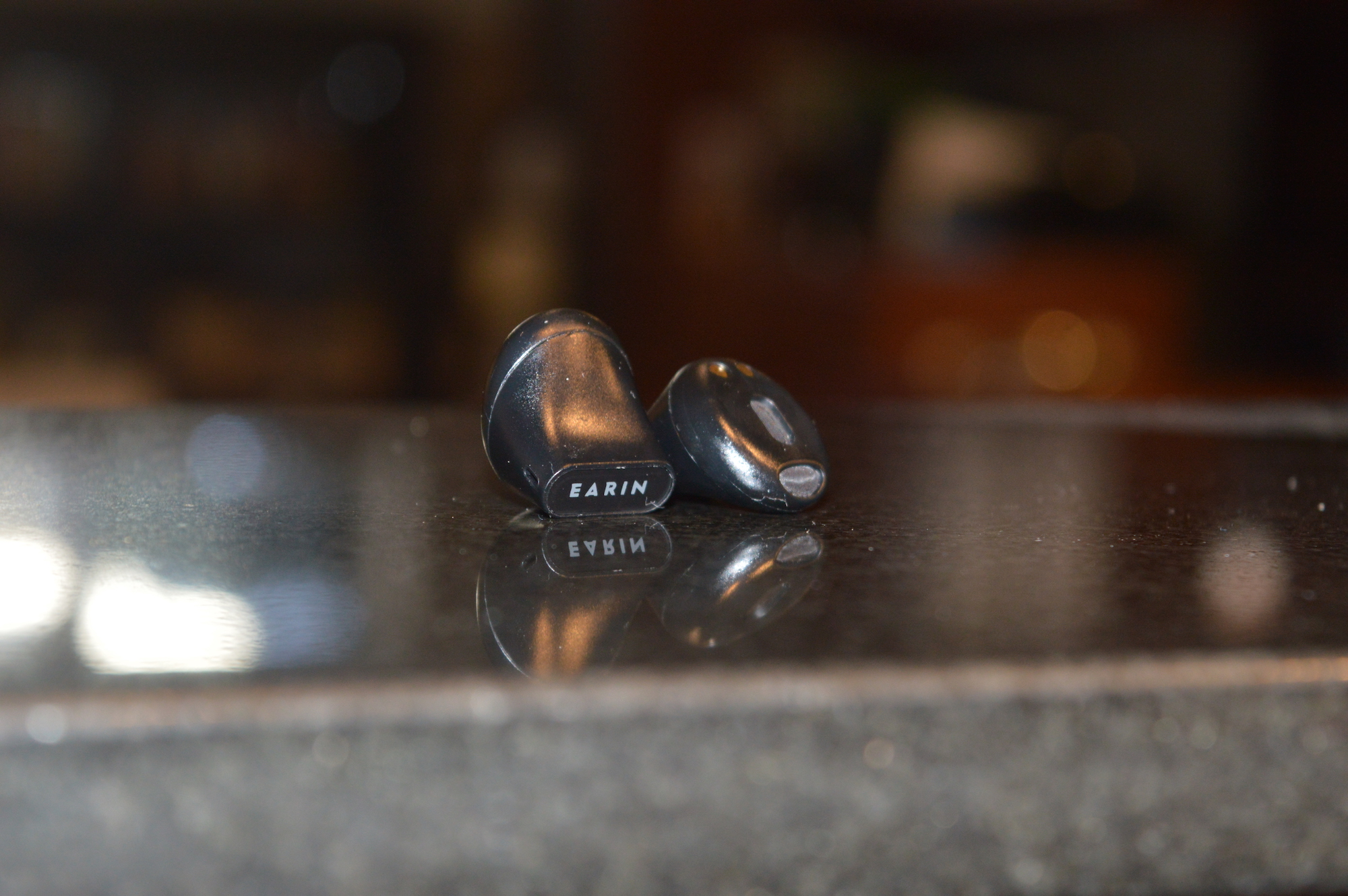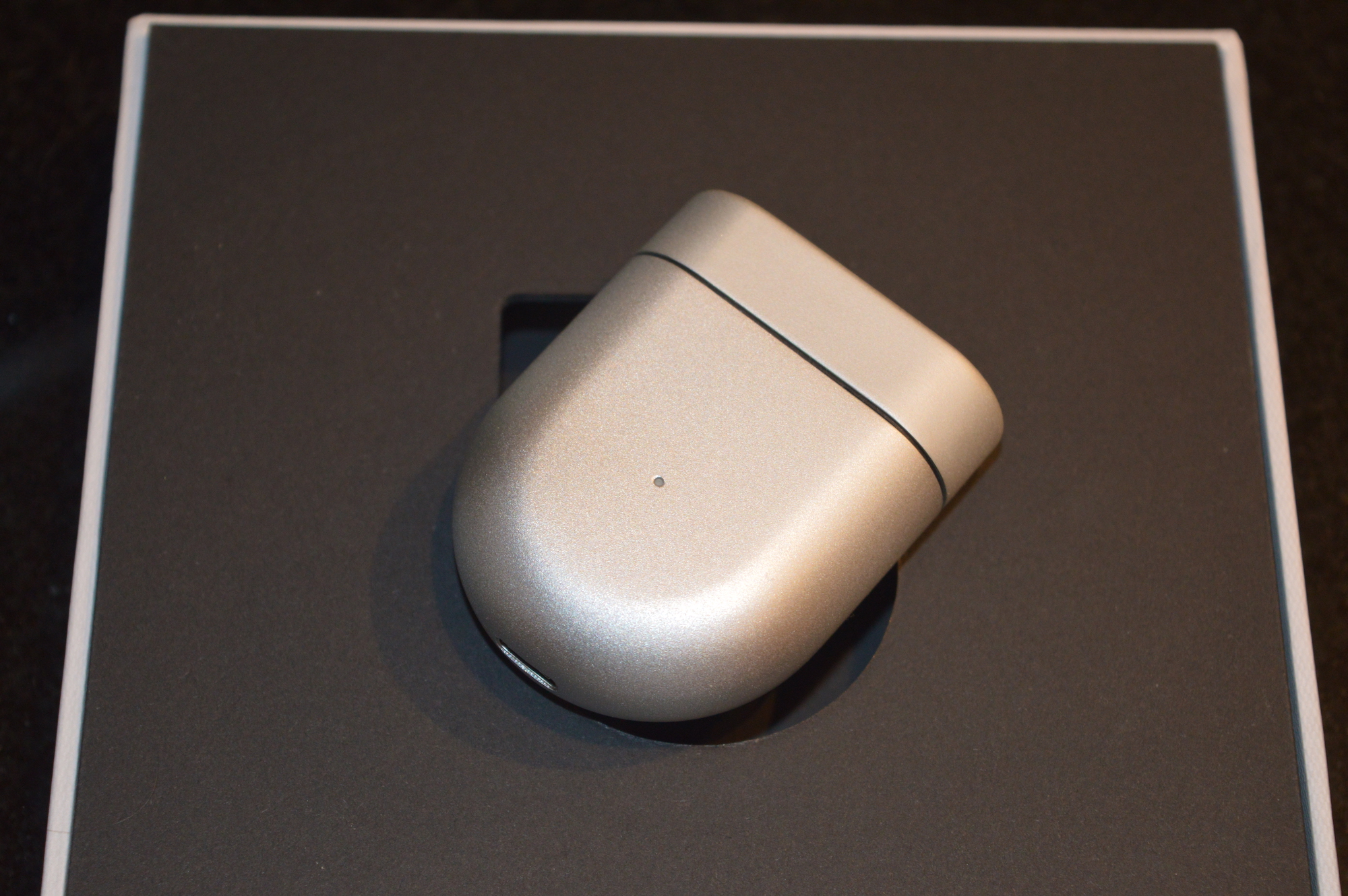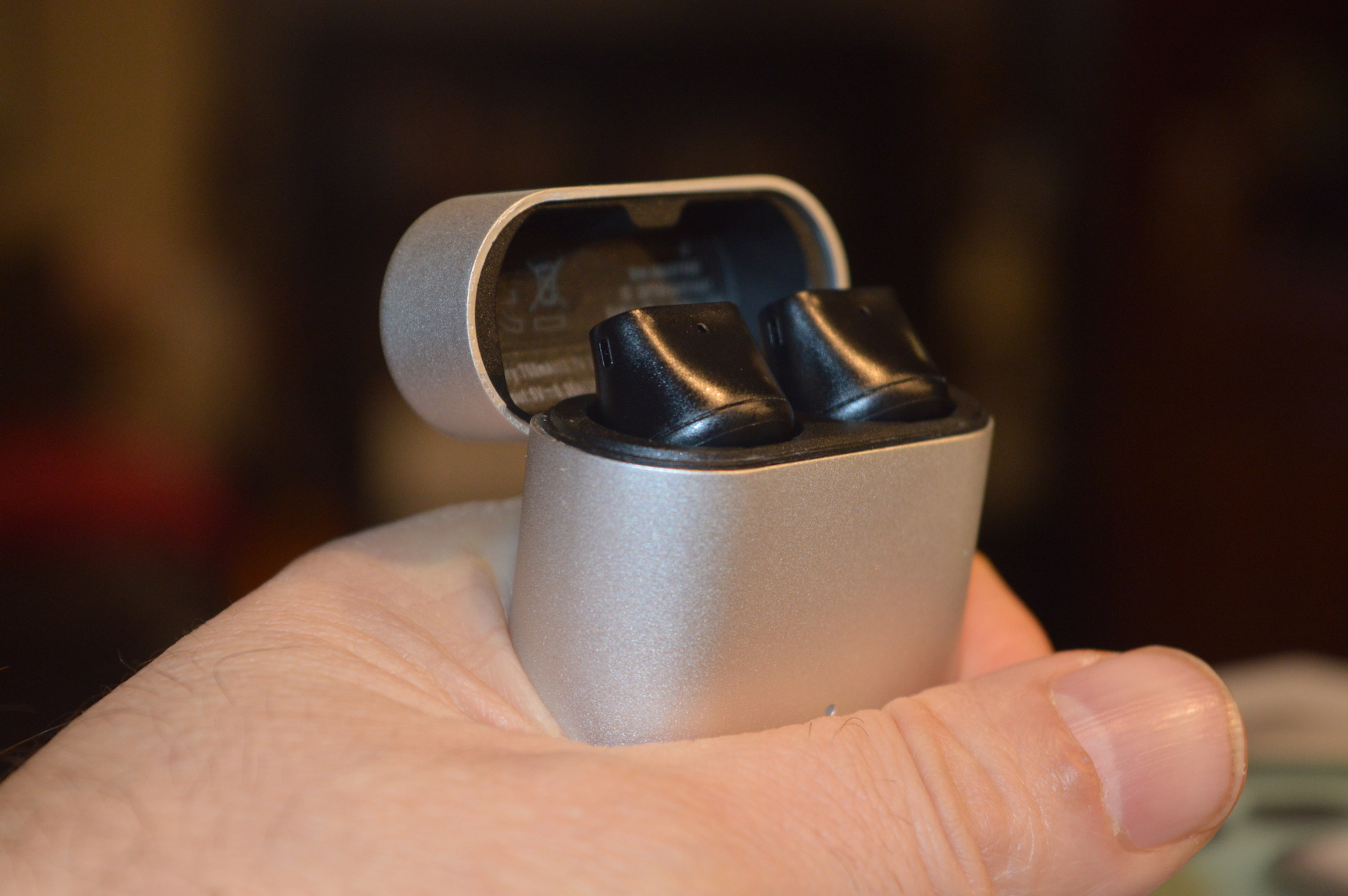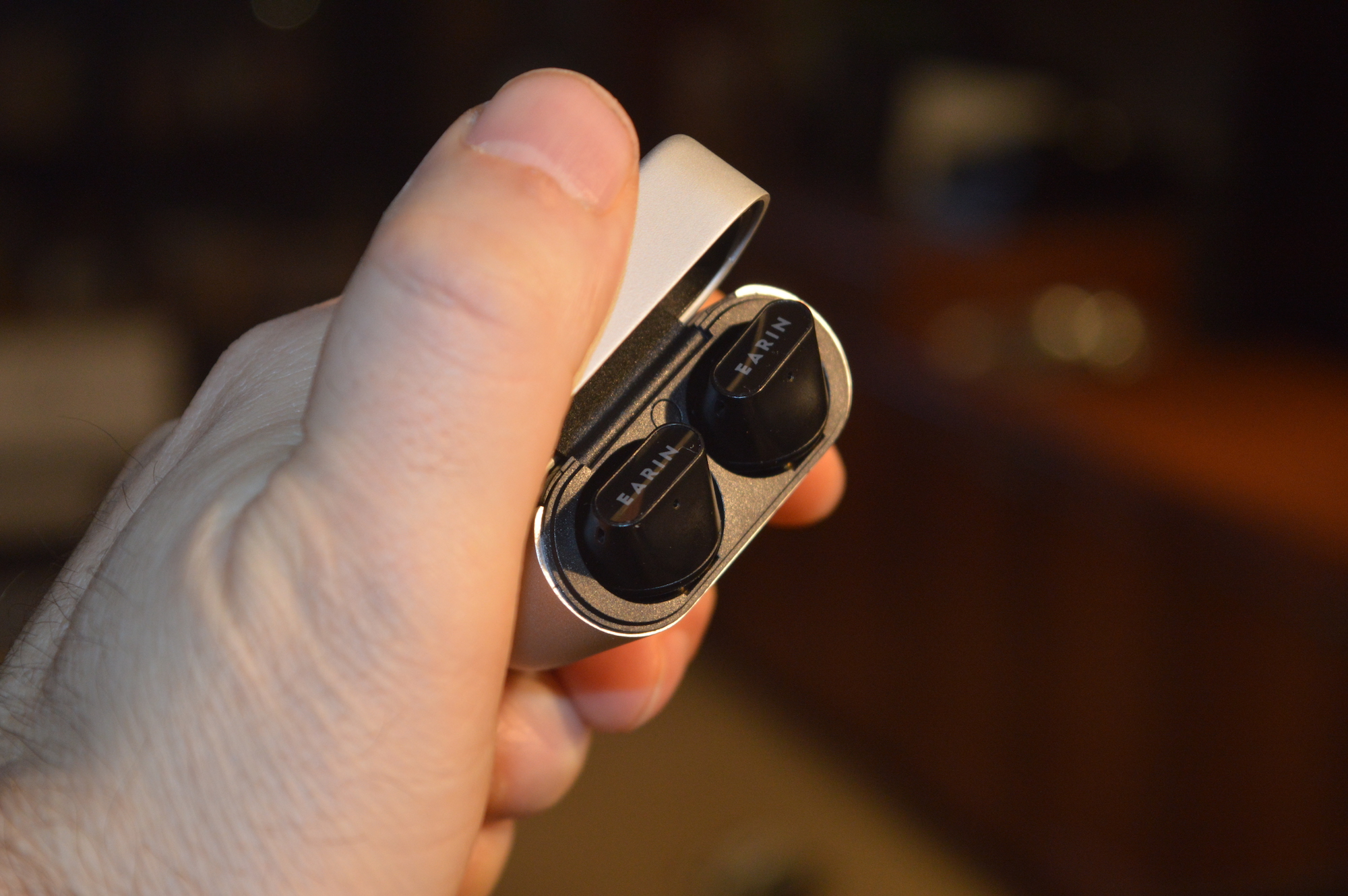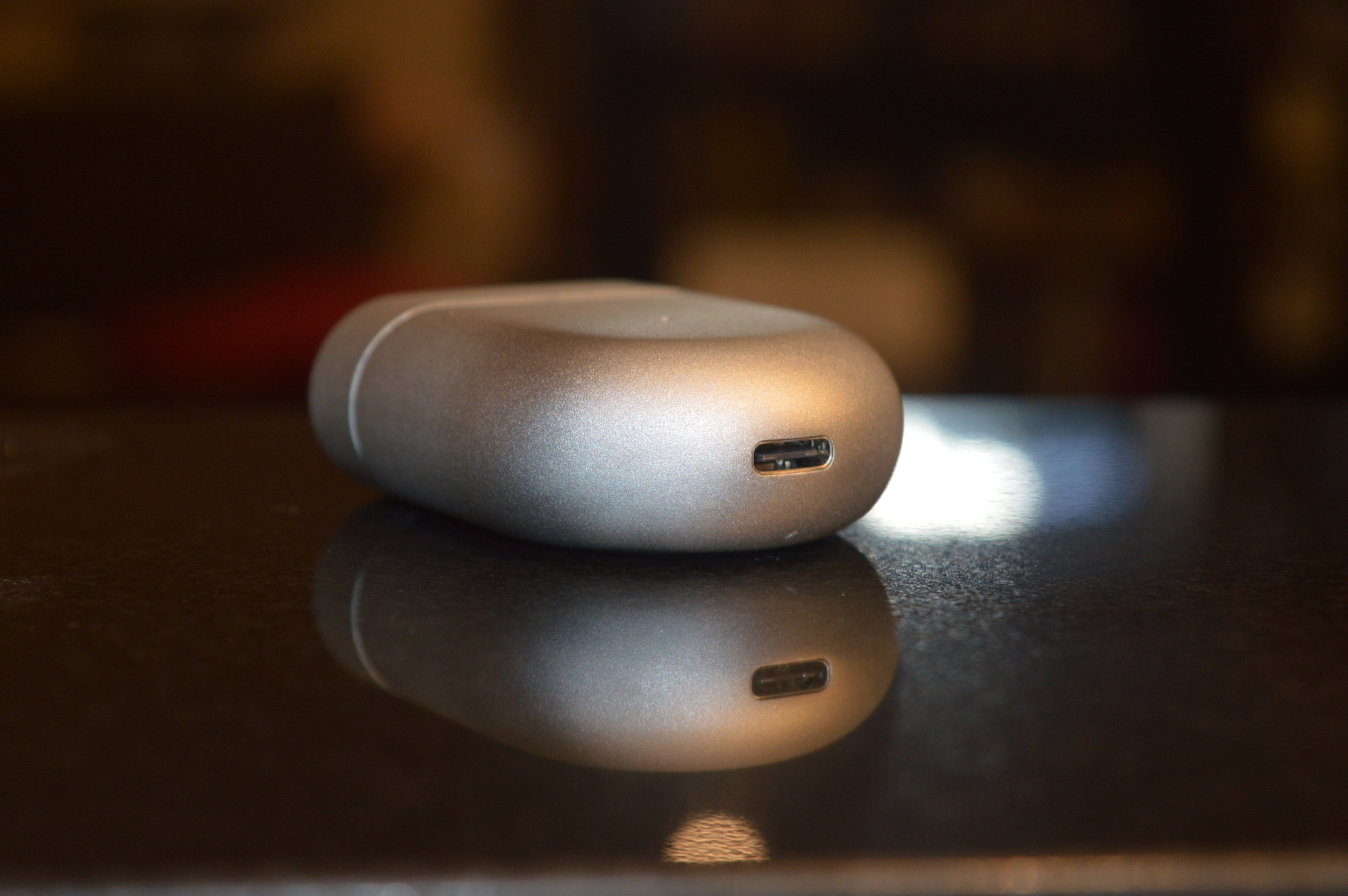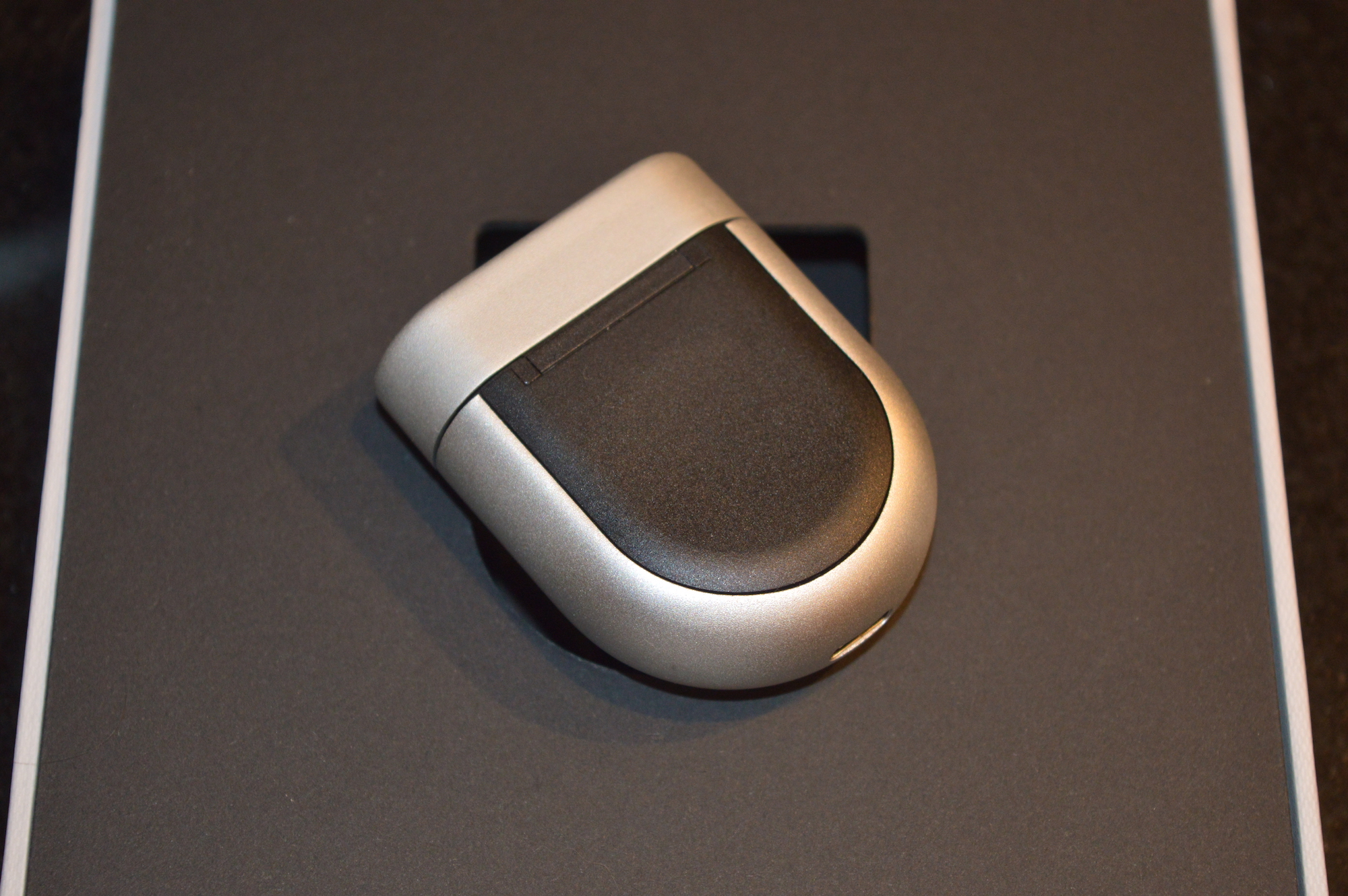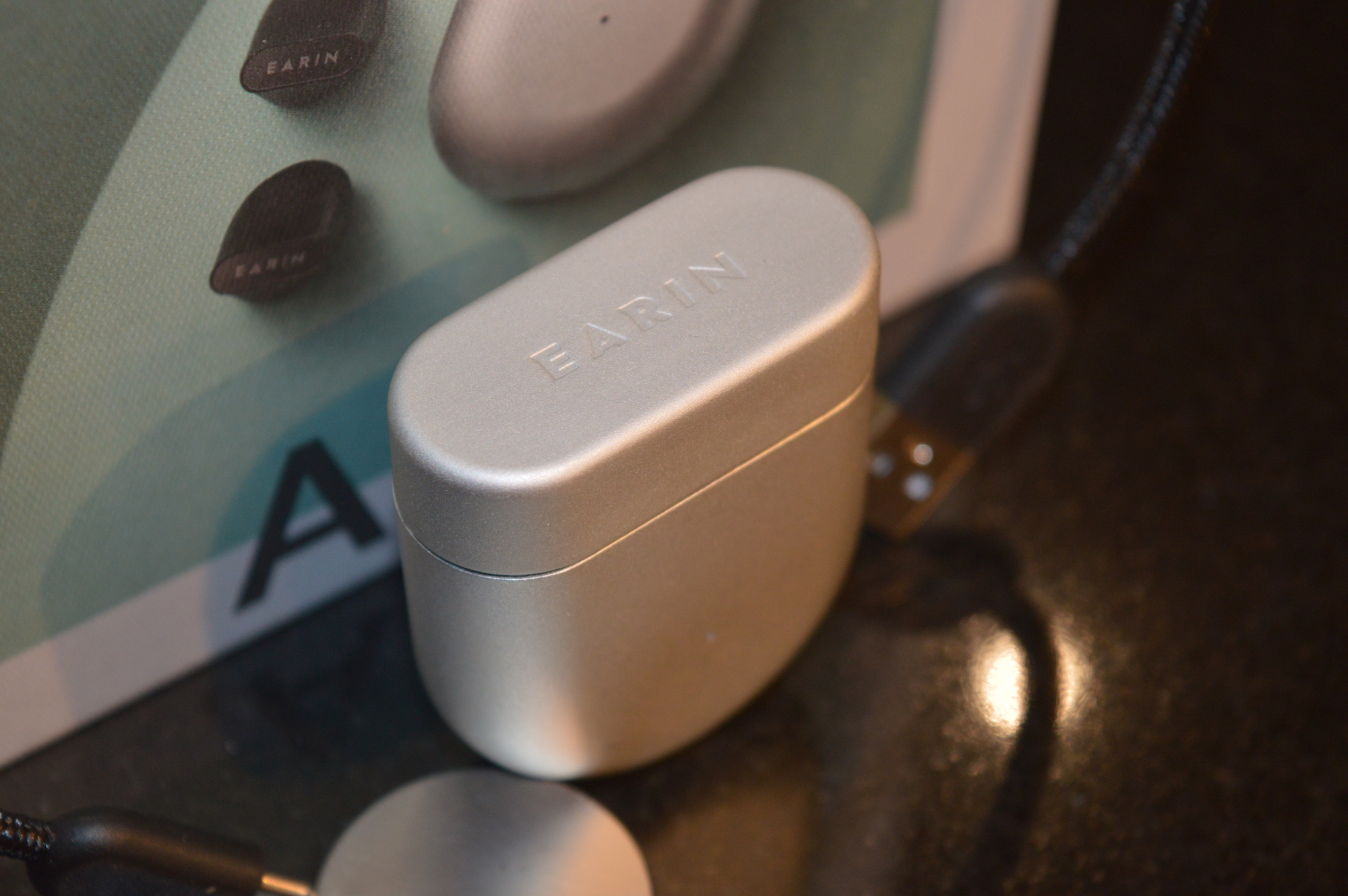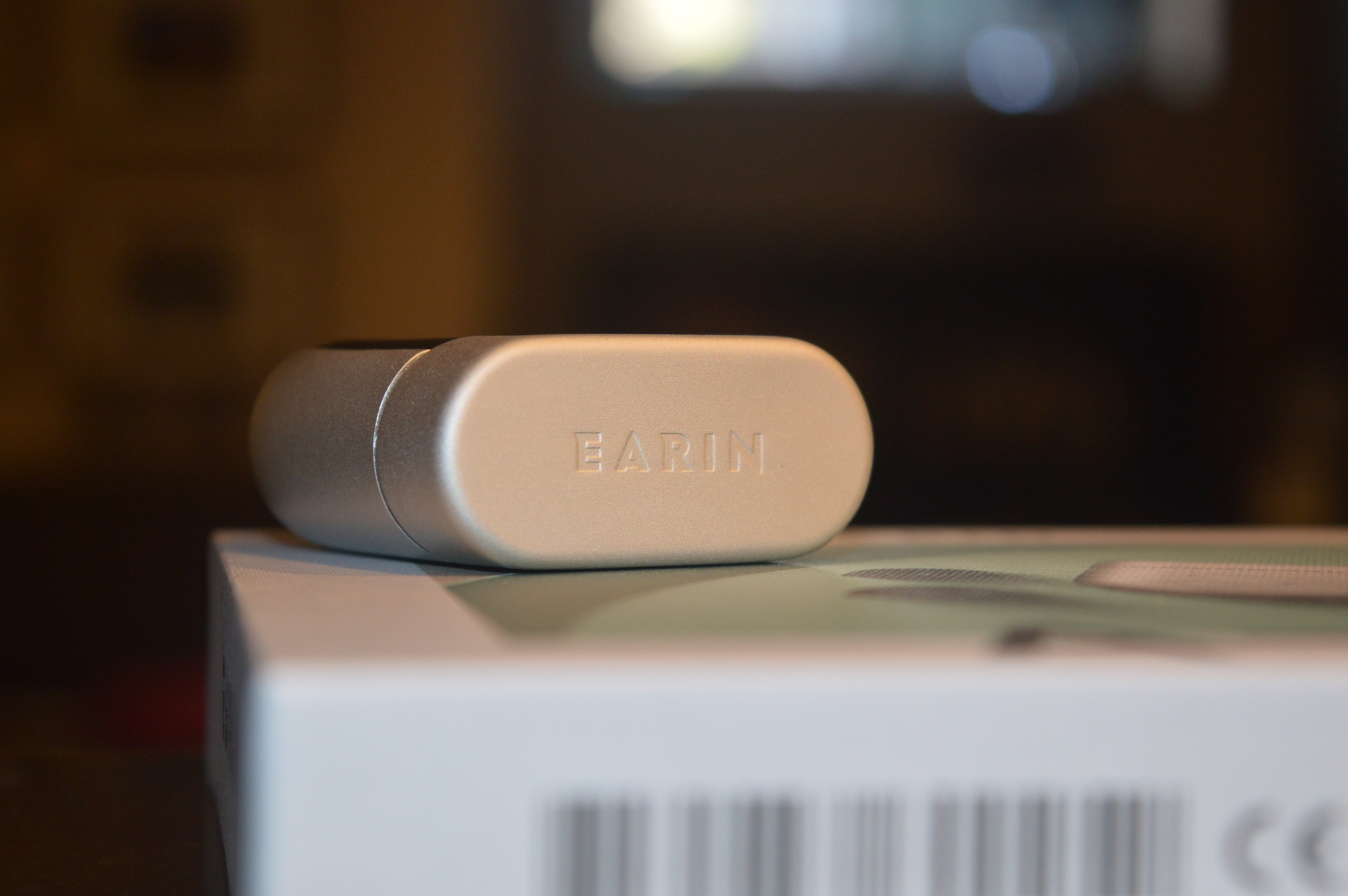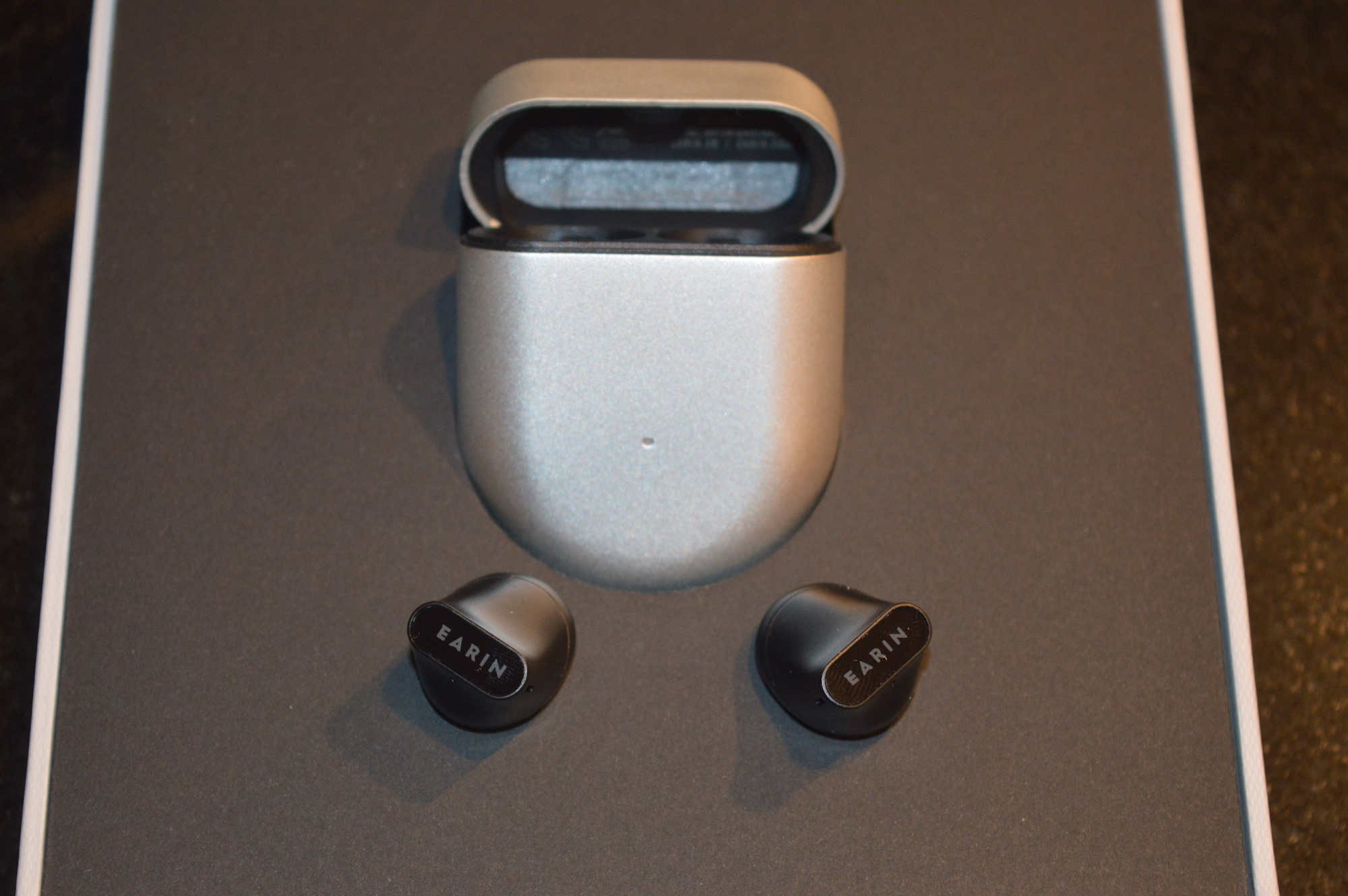
- Tiny size
- Elegant design
- Good call quality
- Good battery life
- Wireless charging
- Auto play/pause
- Expensive
- Limited control customization
- No noise cancellation
- No quick-charge option
You may not have heard of Earin, but if you’ve ever seen anyone with a set of true wireless earbuds, you’ve seen the impact the company has had on personal audio. The Swedish company single-handedly launched the true wireless category when it debuted its M-1 earbuds in 2015. The rest, as they say, is history. And though things have been pretty quiet for Earin in the intervening years, it has not been resting on its laurels.
At CES 2021, the company unveiled the $199 A-3, its third-generation true wireless product, and its first earbuds to use a semiopen design. Much like the M-1, the A-3 has broken barriers as the smallest and lightest earbuds on the market, as well as the first true wireless earbuds to automatically detect which ear they’re in.
All of which is very impressive, but it won’t mean much if the A-3 can’t perform in all of the key areas like sound quality and battery life. Let’s find out if they’re worth your consideration.
What’s in the box?

The Earin A-3 ship in a matte-printed cardboard box. With the exception of a few small plastic stickers protecting the touch surfaces of the earbuds, it’s all readily recyclable. Inside, you’ll find the A-3 earbuds — already in their charging case — a braided USB-C charging cable, and a user pamphlet.
Design

Let’s start with the charging case. Available in silver or black, its U-shaped bottom and flip-top lid most closely resemble the case of the second-gen Google Pixel Buds. But the A-3’s satin-finish aluminum shell gives it a high-end, sophisticated feel that Pixel Buds owners can only dream about. It might just be the best-looking charging case I’ve ever seen, on par with the Klipsch T5’s awesome Zippo-style case.
Earin tells me that both the case bodies and the lids are polished by hand and then clear anodized, so there may be small differences in finish you see on these parts. That was certainly true for me — Earin sent two samples of the A-3 and each case and lid were slightly different in terms of smoothness.
The charging case is also really small — only fractionally larger than the one that houses the AirPods Pro, which remains one of the smallest cases on the market.
They look like someone painted a set of AirPods black, ripped the stems off, and then gave them a mohawk.
The back of the case features a black plastic panel that not only allows wireless charging to take place, but also masks the A-3’s invisible pairing and reset button.
The only thing I can’t figure out is why the case isn’t even smaller than it is. You’ll wonder why too when you flip open the lid to reveal the A-3 earbuds inside. They’re incredibly small. So small, in fact, that if you removed the bottom two-thirds of the charging case, you might not have room for the battery and wireless charging coil, but you’d still have plenty of room for the buds.
As for the earbuds themselves, they look like someone painted a set of AirPods black, ripped the stems off, and then gave them a mohawk.
Predictably, they’re easy to drop if you’re not paying attention. But much to my surprise, they pop in and out of their charging sockets effortlessly. Their magnets are so well aligned, you need only drop them into the top of the case and they do the rest, snapping into position like they’ve been anxiously waiting for the chance to do so.
Earin claims the A-3 are rated IP52 for water and dust protection. That’s the bare minimum needed to claim water resistance, but unless you forget about them while you’re in the shower (entirely possible), it should be fine for most workouts.
Comfort, controls, and connections

Do earbuds with silicone eartips make your ears feel like there’s a small rubber critter trying to get to your brain? Do you like the way Apple’s AirPods or their wired equivalent, the EarPods, feel? If you answered yes to either question, you’ll find the A-3 very comfortable. You may also find, as I have, that they feel a lot more secure than Apple’s earbuds.
There’s really no such thing as a perfectly comfortable set of earbuds, but the A-3 come as close as I’ve ever felt.
Their shape is part of the reason. The main body is a tiny bit bigger than the equivalent part of the AirPods, which helps them make contact with the skin of your concha (the outer ear). But the other part is their tiny mass. Shake your head as vigorously as you dare, or pound the pavement for hours — these things aren’t going anywhere.
There’s really no such thing as a perfectly comfortable set of earbuds, but the A-3 come as close as I’ve ever felt.
The A-3 are equipped with both touch-sensitive panels (the little protruding fins with the Earin logo), as well as accelerometers. Making skin contact with the panels is considered a “touch,” while “taps” are any kind of bump, and can be done through clothing like gloves and hats.
What’s a bit odd is that despite these two kinds of control methods, Earin makes you choose which one you want to use, then disables the other. Stranger still, these modes aren’t equivalent to each other. Under the “classic” mode, which uses touches, you can single-, double-, and triple-touch to control play/pause, track skip forward/back, and voice assistant access. It’s possible that Earin intends to let you customize what these touches control, but right now they’re locked in.
Under the “hybrid” mode, you can use a double tap, but this only controls play/pause and can’t be used for any other function.
That’s the bad news. The good news is that both taps and touches are accurately recognized by the earbuds — just don’t get them confused. If you try to use taps while in classic mode, you’ll get frustrated pretty quickly.
Automatic ear detection works very well, quickly pausing and resuming your tunes when you remove or reinsert an earbud, and it can be turned off within the app if you wish.
Bluetooth pairing is quick and easy, and the earbuds remember previously paired devices, so there’s no need to use the pairing button when flipping back and forth between them.
Wondering about the A-3’s ability to automatically know which ear they’re in? It works as advertised by using the accelerometer to detect the earbud’s orientation. When the “E” in the Earin logo is facing up, it’s the right earbud. When the “N” is up, that’s the left bud. When either bud is facing the same way as its mate, the system assumes you’re sharing one of your buds with a friend and switches both earbuds into mono mode, so that neither of you miss any detail from the audio track. Clever!
Bluetooth range is decent. Indoors, I was able to roam two stories away from my phone before the connection started to dropout.
Sound quality

With their semiopen design, it would be unrealistic to expect that the A-3 could deliver the same sound quality as a set of similarly priced in-ear-canal earbuds. Instead, what you get is sound quality that rivals — and is perhaps even slightly better than — Apple’s AirPods.
The sound is not without compromises.
The A-3 are particularly good at rendering higher frequencies, with a sound that is clear and accurate. Vocals — especially those that hit the highest registers, like Whitney Houston’s — are brilliant and tack-sharp.
Bass, which is usually the Achilles’ heel of semiopen earbuds, shows up with enough presence that you don’t get that nagging feeling that something’s missing. Even the midranges get their due, all of which pulls together to make for a satisfying listening experience.
But the sound is not without compromises.
First, your listening environment will play a bigger role than with closed earbuds. Traffic, loud chatter, or even the sound of a TV in an adjacent room will make their way into your ears, where they will compete with your music.
Second, as powerful as the A-3 are for a semiopen design, I had to run them at 80% volume to feel like I was getting enough loudness. That’s not only going to hit the batteries harder, but it also pushes the A-3’s drivers to the limit. On a few occasions, I heard the very beginnings of distortion creeping in.
Third, nuances in the midranges and the overall soundstage tend to get a bit smeared. Our brains are amazing at adapting to this and you may not be bothered by it at all, but throw in a set of Jabra Elite 75t or AirPods Pro, and you can definitely hear the difference.
I don’t know how much tweaking the EQ would help with this — I suspect it probably wouldn’t help much — but the point is moot: There are no EQ adjustments in the Earin app for the moment.
The upside of a semiopen design is that you can maintain a much better awareness of your surroundings, something you may want to keep in mind if your workout involves running near traffic or other hazards.
Battery life
Earin pegs the A-3’s battery life at five hours per charge, with a total playing time of 30 hours when you include the charging case. That beats both the AirPods and AirPods Pro, which both max out at five hours and 24 hours. Plus, I think Earin may have been conservative when it came up with its numbers. After running the A-3 for five consecutive hours at 85% volume, the Earin app still reported 30% battery remaining.
Unlike Apple’s earbuds, the A-3 don’t have a quick-charge mode, so when they die, you’ll have to wait about 90 minutes before they’re ready to go for another five hours. The AirPods, by comparison, can eke out three hours of play time with a 15-minute snooze in their case.
Call quality
Given that the A-3 barely protrude from your ears at all, which means their mics are further away from your mouth than stem-based designs, I was prepared for some pretty terrible call quality. But Earin has managed to pack four mics into those tiny buds, including two dedicated voice pickup units, and the result is surprisingly good.
Most background sounds, like passing traffic, are well-suppressed, and my voice was mostly clear to callers. As you might expect, wearing a hat over your ears will reduce call quality, but even then, I could still make myself understood.
Our take
The Earin A-3’s only major contribution to the true wireless earbud world is their incredibly small size. I’m not sure that’s worth the $199 asking price for most folks. But if you’ve struggled to find earbuds you can live with, the A-3 might finally be the answer you’ve been looking for.
Is there a better alternative?
If a semiopen design appeals for fit reasons, iPhone users should probably stick with Apple’s AirPods. For the same price as the A-3, you get a nearly identical feature set, sound quality that is almost as good, and hands-free access to Siri thanks to Apple’s H1 wireless chips.
For everyone else, the A-3 have few direct competitors. There’s 1More’s $60 Comfobuds, which are semiopen and very comfortable, but they don’t sound as good, don’t have wireless charging, and have a shorter battery life. A better compromise might be the $150 Oddict Twigs. They’re just as comfortable as the A-3, they charge wirelessly, and have a better bass response, but their battery life, at three hours, isn’t as good.
How long will they last?
Backed with a one-year warranty from Earin, the A-3 and their charging case look to be very well built, with premium materials. Without any silicone eartips to wear out, they’ll likely last longer than some in-ear-canal models.
Should you buy them?
Yes, but only if you highly value what the A-3s are offering: A tiny and comfortable semiopen design. If this isn’t at the top of your list, you can get better sound quality for less money with other models.
Editors' Recommendations
- V-Moda’s first true wireless earbuds come with tons of fit options
- Yamaha’s $100 TW-E3B true wireless earbuds are its smallest yet
- Soundcore Life P3 wireless earbuds offer Active Noise Canceling for under $100
- B&W’s first true wireless earbuds come with their own Bluetooth transmitter
- Skullcandy Dime hands-on review: Cheap and cheerful

